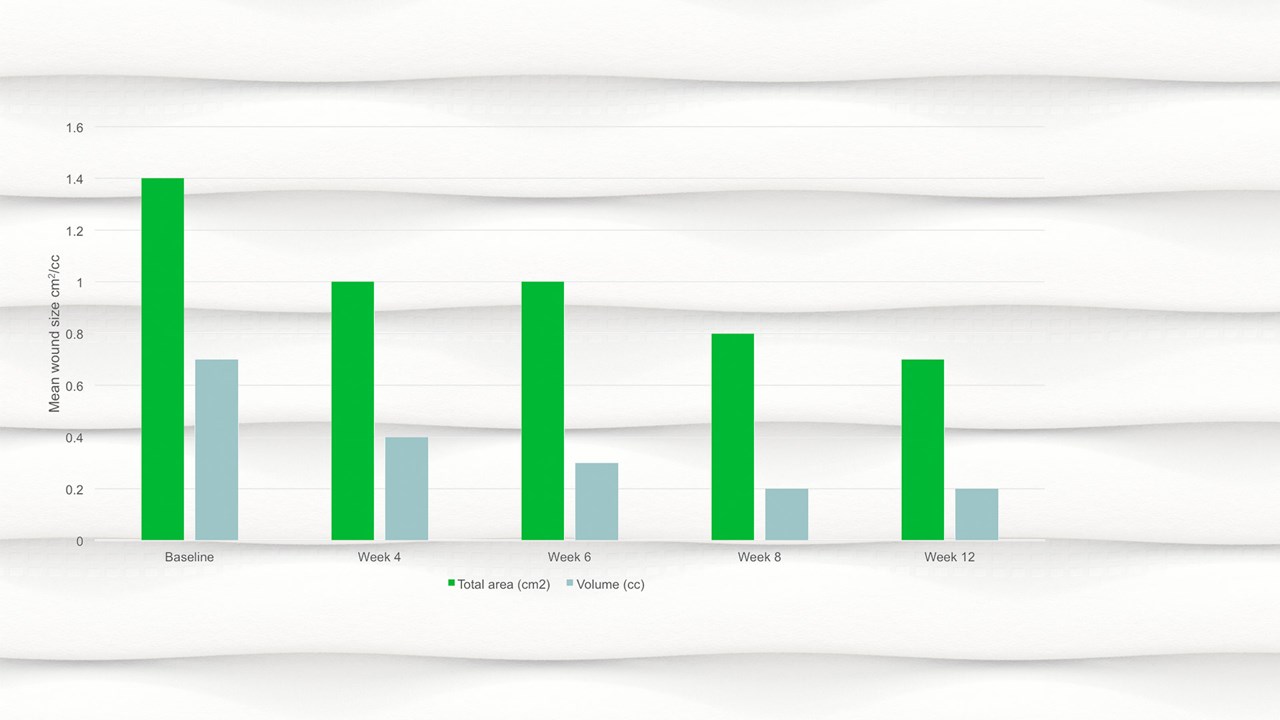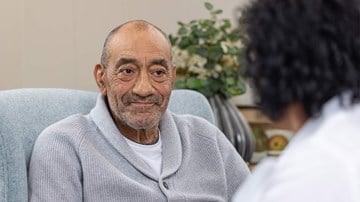Exufiber in practice
The condition of peri-wound skin improved and diabetic foot ulcers reduced in size in a study of 21 patients treated with Exufiber®.

Open, non-comparative, multi-centre post clinical study of the performance and safety of a gelling fibre wound dressing on diabetic foot ulcers
Chadwick, P., McCardle, J. Journal of Wound Care 2016; 25(4):290-300.
- Foot ulceration in diabetic patients is difficult to manage.
- Patients whose diabetes is poorly managed are at an increased risk of foot ulceration and foot amputation.
- Dressing selection is one important aspect of diabetic foot ulcer (DFU) management.
- DFUs are associated with medical costs, as well as personal, social and economic costs.
- Like other chronic wounds, DFUs may produce excessive levels of exudate; as a result, the periwound skin is at risk of maceration.
Aims
To evaluate the performance and safety of Exufiber, a gelling fibre wound dressing, in the treatment of DFUs.
Methods
- This was an open, non-comparative multi-centre investigation.
- Both in and out-patients were eligible.
Primary study objective:
- To evaluate the performance and safety of Exufiber when used as intended on DFUs.
- In line with this objective, a number of evaluation parameters were measured to monitor the condition of the peri-wound skin (evaluated in terms of changes from baseline assessments): maceration; redness/irritation; rash/eczema; blistering; dermatitis; skin stripping; trauma to the wound edges; product degradation on the skin.
Secondary study objectives:
- Evaluation of dressing-related pain (measured using a 100mm visual analogue scale (VAS)).
- Wound status (measured by changes in wound size and healing phase).
- Clinician/patient opinions of the test product.
- Technical performance of the test product (measured by the presence of dressing residue following removal, and handling of wound exudate).
- Patients with more than one ulcer were eligible for inclusion into the investigation, however only one ulcer per patient was included in the investigation.
- Each patient was treated according to the local clinical routine and all dressings were applied according to the manufacturer’s instructions.
- Patients participated in the investigation until complete wound healing or if the treated wound became dry (whereby the test product was no longer applicable) or for 12 weeks, whichever occurred first.
- Patients were assessed at baseline and again at weeks 1, 2, 4, 6, 8 and 12 post-treatment.
- Dressing changes were performed according to the local clinical routine (usually 3 times per week) when the dressing was saturated and depending on the status and location of the wound; dressing changes between visits were allowed.
- At each assessment visit, the following variables were assessed:
- Wound size, volume (using the Pictzar program) and depth at the deepest point of the wound (using a q-tip); measurements made every fourth week and an additional measurement at week 6)
- Appearance of ulcer bed
- Condition of peri-wound skin
- Technical performance
- Amount and type of wound exudate
- Need for debridement
- Adverse events (AEs)/adverse device effects (ADEs)
- Pain (before removal of the secondary dressing; before removal of the test product; during removal of the test product; after removal of the test product). Some patients were not eligible for inclusion in the pain assessment due to neuropathy
- Clinical signs of infection





